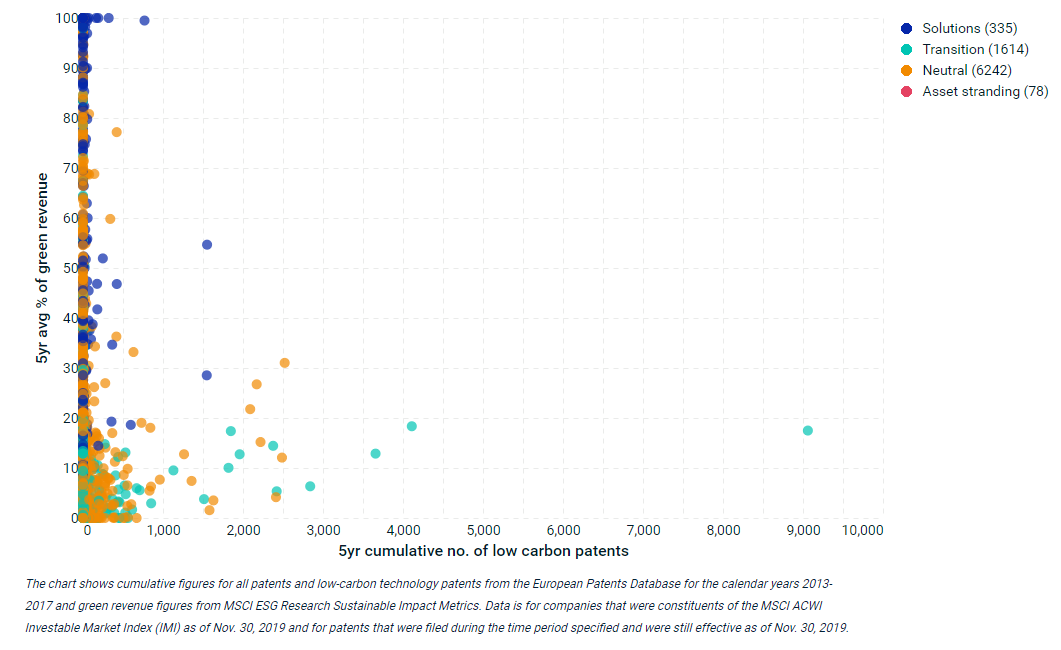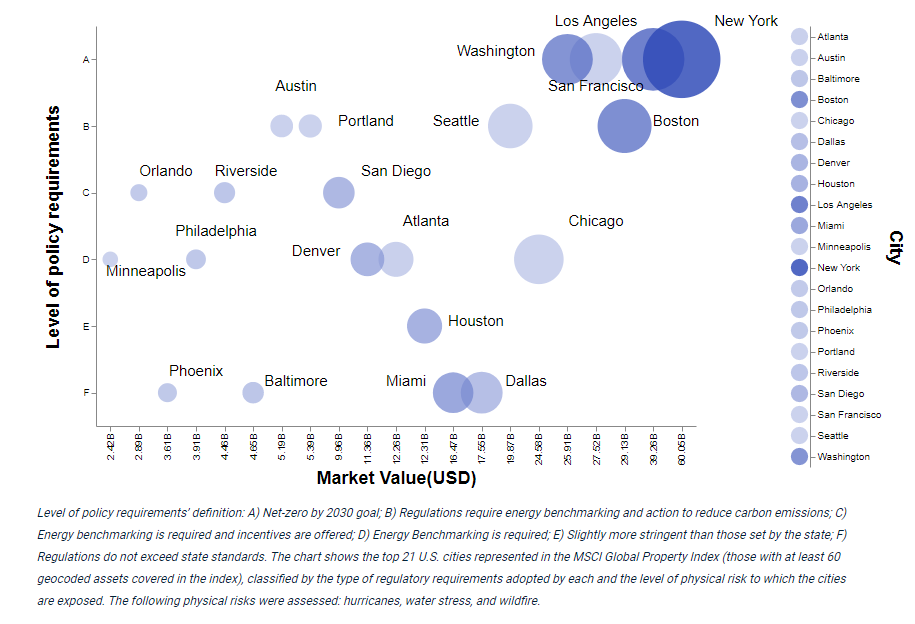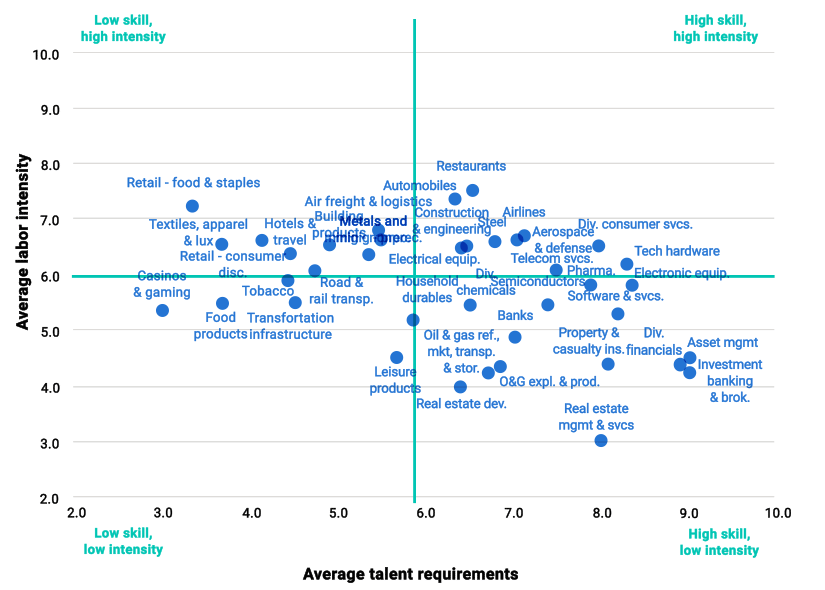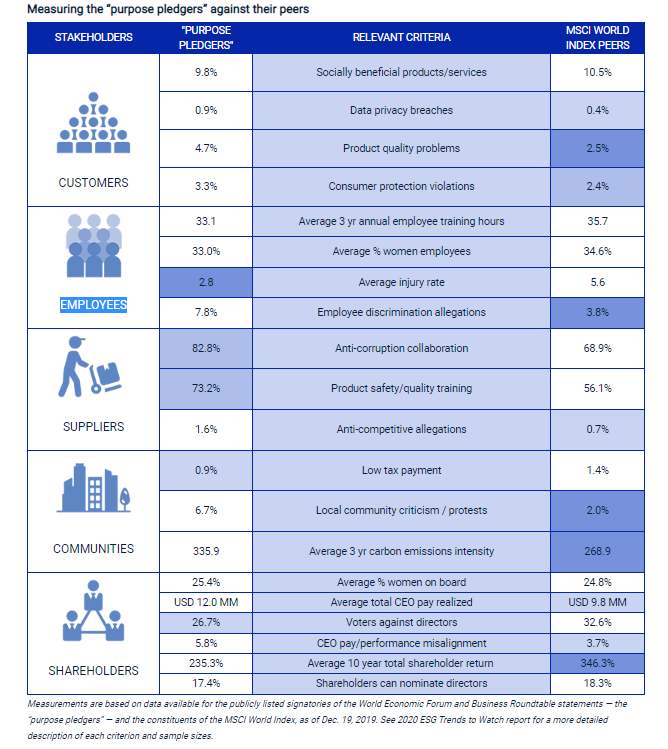The 2020 ESG trends to look out for

Linda-Eling Lee, a leading expert on ESG issues and ESG investing, discusses the definitive trends to look out for this year. She begins with a brief summary of her points:
- The resurgence of stakeholder capitalism means that shareholders are no longer alone in finding channels to hold companies accountable.
- Whether it’s accessing capital or embarking on a workforce makeover, the top echelon of corporate management will find that deft management of ESG issues becomes a critical core competency.
- Climate change accelerates as an investment theme, driving a looming re-valuation for "brown" properties and a search by investors for opportunities through mining alternative data sources.
ESG themes are long-term, but some can emerge with sudden force. We are watching five trends we believe will unfold in 2020 to catapult ESG investing into the new decade.
Climate change innovators: spotting the sleeping giants
Solving the climate crisis is likely to take innovative technology, scalable deployment and a bit of luck. Many envision climate saviors coming in the form of plucky startups. But alternative data is hinting instead at big, established players, biding their time and quietly assembling an arsenal of climate solutions.
In 2020, investors turbocharge their use of alternative data to spot the companies plotting to take a lead in propelling us toward a carbon-free economy.
Green revenue vs. low-carbon patents of companies, by their positioning for a low-carbon economy (solution provider, in transition, neutral, asset stranding).
New terms for capital: ready or not, here comes ESG
Banks have stepped away from some gun makers, and investors have been keen to channel money toward green energy projects. But for the average, middle-of-the-road company, ESG has mostly been tossed to the corporate social responsibility office or used to prettify annual reports.
In 2020, ESG storms the CFO’s office, elbowing its way onto the bottom line as financiers get creative with ways to bind ESG criteria to their terms of capital, introducing a plethora of corporate borrowers into the wide world of ESG.
We assume that if ESG-linked criteria were not met as of Dec. 31, 2020, for Lenzing, Dürr AG and Maire Tecnimont S.p.A., each of the above issues will incur a one-time margin step-up of 2.5 bps, 2 bps and 10 bps, respectively, which are stated publicly. We assume the credit facilities related to Iberdrola and Enel are each 50% drawn throughout their term. We assume Enel SpA incurs a 2.5-bp one-time margin step-up, similar to Iberdrola. We assume Iberdrola incurs a one-time margin step-up if the ESG-linked criteria are not met by Dec. 31, 2020. Enel will incur a step-up if SDG-linked criteria are not met by Dec. 31, 2021, which is stated publicly, as with its bond.
Sources: MSCI ESG Research; Thomson Reuters; “Lenzing Investor Presentation.” Lenzing Group, Nov. 6, 2019; “Inexpensive, innovative and sustainable: Dürr issuing a Sustainability Schuldschein in the amount of € 200 million” Dürr AG, Jun. 19, 2019; “Maire Tecnimont confirms its commitment to Sustainability by finalizing an Esg-Linked Schuldschein Loan (Non Price Sensitive)” Maire Tecnimont, Dec. 13, 2019; "Iberdrola extends two multicurrency syndicated loans for €5.3 billion with the best conditions since 2007” Iberdrola, Jan. 29, 2018.
Re-valuing real estate: investing in the eye of the hurricane
Wildfires, storms, floods, droughts, heat waves…. Just as real estate investors and managers begin to grapple with what climate change might do to their assets physically, now they may also have to contend with accelerating regulation. Location matters in real estate, and vast portions of the global property stock are in cities and regions marching towards zero-carbon building standards.
In 2020, greening the property portfolio will move from a nice-to-have reputation booster to an imperative in the face of a looming "brown discount" if real estate investors don’t kickstart their journey to zero carbon.
Exposure to regulations and climate hazards, by real estate market.
Level of policy requirements’ definition: A) Net-zero by 2030 goal; B) Regulations require energy benchmarking and action to reduce carbon emissions; C) Energy benchmarking is required and incentives are offered; D) Energy Benchmarking is required; E) Slightly more stringent than those set by the state; F) Regulations do not exceed state standards. The chart shows the top 21 U.S. cities represented in the MSCI Global Property Index (those with at least 60 geocoded assets covered in the index), classified by the type of regulatory requirements adopted by each and the level of physical risk to which the cities are exposed. The following physical risks were assessed: hurricanes, water stress, and wildfire.
The new human capital paradox: juggling layoffs and shortages
It’s time to retire old skills, bring new ones in, and fast. The pressure is on for companies to transform their workforces as competitors go digital, automated and everything in between. The trick is "How?" Workers aren’t the only ones needing disparate new skills – HR and management likely do too.
In 2020, many more companies will have to become human capital multi-taskers, laying off some workers on the one hand while on the other simultaneously recruiting scarce new kinds of talent that may seem alien to management. Like a high wire juggling act, any lapse could prove disastrous.
MSCI ESG industries by average talent requirements and labor intensity.
The chart shows MSCI ESG industries plotted by their average talent requirements (based on data from the U.S. Bureau of Labor Statistics regarding average salary and education level for the business segments in which companies are involved) and their average labor intensity (based on revenue per employee). Data is for constituents of the MSCI ACWI Index as of June 30, 2019.
Keeping score on stakeholder capitalism: looking for accountability in all the new places
Stakeholders are hot right now. But glossy mission statements have done little to shift the enduring power dynamic between companies, shareholders and other stakeholders. Until now, only shareholders have had clear channels for holding companies to account. Bit by bit, other stakeholders are trying to influence the conversation.
In 2020, stakeholders without proxy cards will evolve their activism, joining forces with willing shareholders, and using increasingly sophisticated means to size up whether companies really “walk the talk” when it comes to their stakeholder commitments.
While we’re not quite at the point where “ESG investing” has simply become “investing,” the 2020 trends illustrate how its effects have reached across asset classes, industries and investor types.
A detailed paper, blog and videos on each trend can be accessed here. Sign up and watch to hear even more insight.
The authors thank Mike Disabato, Bentley Kaplan, Kevin Kwok, Frank Li, Cyrus Lotfipour, Meghna Mehta, Gillian Mollod and Gaurav Trivedi for their contribution to this research.





